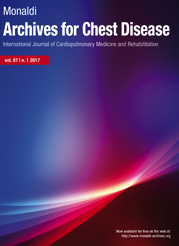Prevalence, risk factors and clinical impact of burnout in internal medicine units: a call to action
All claims expressed in this article are solely those of the authors and do not necessarily represent those of their affiliated organizations, or those of the publisher, the editors and the reviewers. Any product that may be evaluated in this article or claim that may be made by its manufacturer is not guaranteed or endorsed by the publisher.
Authors
Health workers, and in particular doctors and nurses working in internal medicine units (IMU), are at high risk of burnout. Overcrowding, complexity and severity of clinical cases, patients’ social and family issues, impact of death, and “workload" are all aspects that are specific risk factors that might lead to the development of burnout in this scenario. People suffering from burnout may face several psychological problems (including extreme physical and mental fatigue, emotional exhaustion, loss of enthusiasm concerning work, feelings of cynicism, and a low sense of personal accomplishment) and are also at risk of developing some somatic diseases. Furthermore, the quality of care delivered by a worker in burnout seems to worsen and slip down. In this review, we analyzed the main risk factors and consequences of burnout in IMUs, and we propose individual and organizational measures that may be applied to be able to prevent burnout in this setting.
How to Cite

This work is licensed under a Creative Commons Attribution-NonCommercial 4.0 International License.






